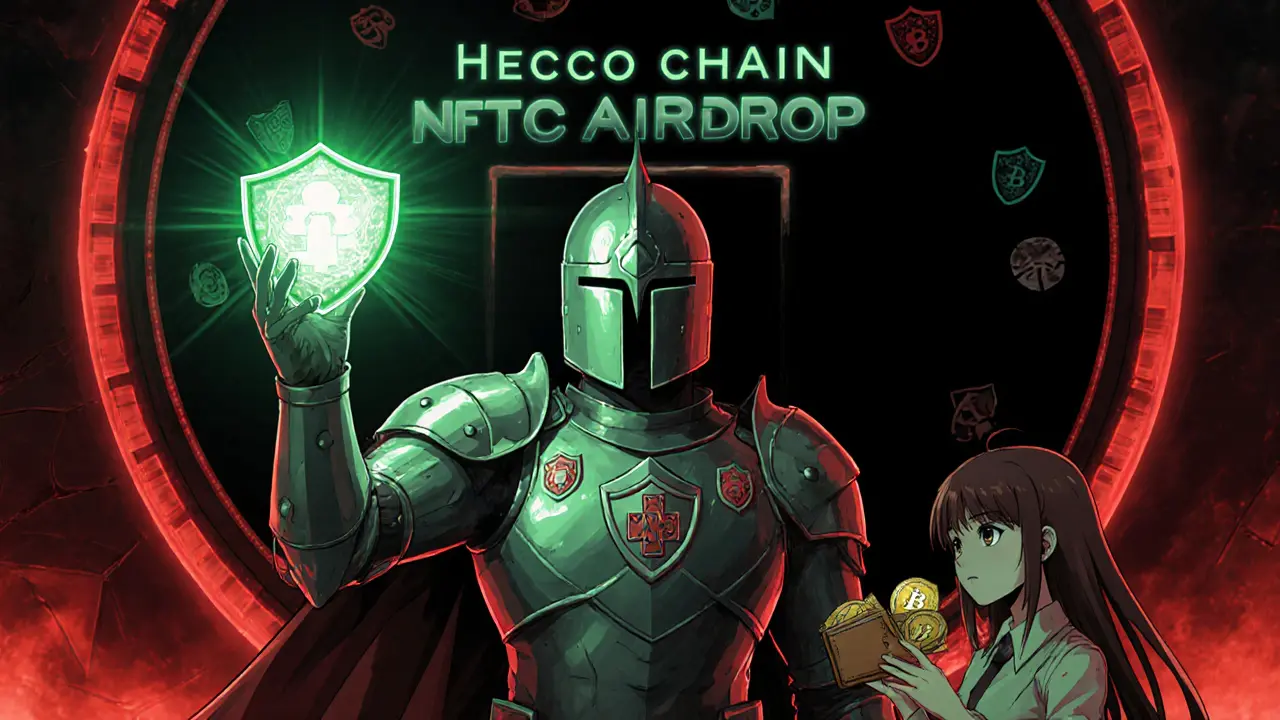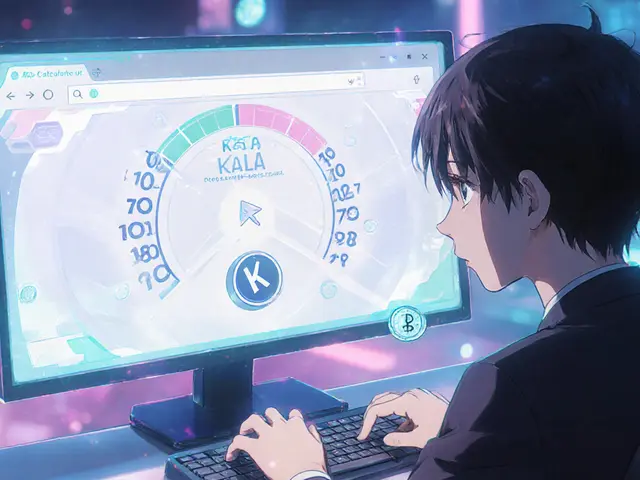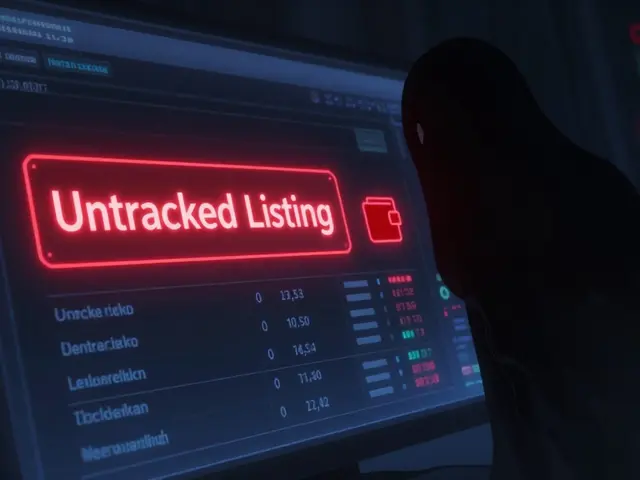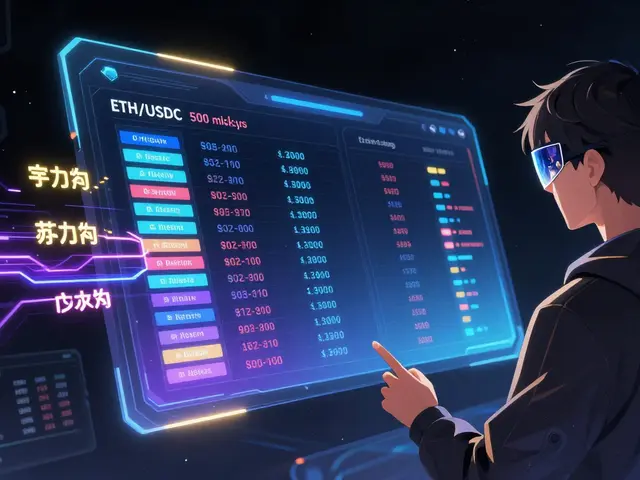You've probably seen headlines about an NFTP airdrop on Heco Chain and wondered whether it's a golden opportunity or a trap. The reality is a mix of confusing claims, missing data, and classic red‑flag signs that any crypto hobbyist should know. This guide breaks down what NFT TOKEN PILOT actually is, where it lives on the blockchain, why the Heco Chain story doesn't add up, and how you can safely check any airdrop before you click "claim".
What Is NFT TOKEN PILOT (NFTP)?
NFTP is a cryptocurrency launched in 2021 that markets itself as an NFT‑focused token on the Binance Smart Chain (BEP20). The project’s official site, nfttokenpilot.com, lists a whitepaper, a tokenomics chart, and a Twitter account @NFTPtoken. Although the name sounds like a generic airdrop, the token’s purpose is to power a marketplace for low‑cost NFTs and provide staking rewards for early adopters.
Which Blockchain Does NFTP Actually Use?
Confusion starts with the claim that NFTP runs on Heco Chain. In truth, all verifiable contract data points to the Binance Smart Chain (BSC). The token contract address 0x37b0…978607 appears on BscScan, showing a BEP20 token with a maximum supply of 2billion. No reliable explorer lists this contract on the Heco network, and the project's own documentation repeatedly calls NFTP a "Binance Smart Chain based NFT project".
For clarity, here are two quick definitions:
- BNB Smart Chain is a high‑throughput, EVM‑compatible blockchain launched by Binance, supporting BEP20 tokens and millions of DeFi apps.
- Heco Chain is a separate EVM‑compatible network operated by Huobi, also supporting BEP20‑like tokens, but with distinct validators and explorer tools.
Because the contract lives on BSC, any legitimate airdrop would have to be delivered via BSC wallets, not Heco Chain wallets.
The Alleged Heco Chain Airdrop: What Is Being Said?
Social media posts, meme‑style graphics, and a handful of Telegram channels are circulating a claim: "Get free NFTP tokens on Heco Chain - claim now!" The story usually follows a template:
- Hold a minimum amount of BNB or another token.
- Join the NFTP Telegram group.
- Visit a link that allegedly verifies your eligibility on Heco Chain.
- Sign a transaction to receive the airdrop.
Unfortunately, none of these steps are documented on the official NFTP website or in the whitepaper. The only place the Heco Chain narrative appears is in unverified posts that lack any link to a contract address, explorer record, or audit report.

How to Verify Any Airdrop - A Step‑by‑Step Checklist
Before you risk gas fees or expose your private keys, run through this practical checklist. Treat each step like a mini‑investigation.
- Check the official source. Does the project's website or verified Twitter mention the airdrop? Look for an announcement with a date, eligibility criteria, and an official link.
- Confirm the blockchain. Use an explorer (BscScan for BSC, HecoInfo for Heco) to locate the airdrop contract address. Verify the contract creator and verify that the token symbol matches NFTP.
- Inspect the contract code. Open‑source contracts let you see if a function actually mints tokens to a user’s address. If the code is hidden or the source is not verified, walk away.
- Test with a small amount. If a claim requires signing a transaction, use a brand‑new wallet with a tiny amount of native gas (e.g., 0.001 BNB). Never approve unlimited token allowances.
- Validate receipt. After the transaction, check the explorer to see if the NFTP balance increased. Confirm the token appears in your wallet’s token list.
If any step fails or feels vague, the airdrop is likely a scam.
Red Flags Specific to the NFTP Heco Chain Claim
Applying the checklist above reveals several warning signs:
- No official announcement. NFTP’s own channels have never posted an airdrop on Heco.
- Zero trading volume. Across all major exchanges, NFTP shows $0 volume and a market cap of $0, indicating virtually no market activity.
- Supply data mismatch. The token’s maximum supply is listed (2bn) but circulating supply is shown as 0, a math error that suggests the token isn’t fully distributed.
- Missing contract on Heco. A search on HecoInfo yields no contract matching the NFTP address.
- Press‑style graphics. The promotional images use generic stock photos and no verifiable URLs.
Each of these points alone could be a deal‑breaker; together they form a strong case for caution.
Comparison: NFTP Airdrop vs. Typical Legitimate NFT Airdrops
| Aspect | Legit NFTP Airdrop (BSC) | Typical Scam Airdrop |
|---|---|---|
| Official Announcement | Posted on nfttokenpilot.com & verified Twitter | Only on random Telegram groups |
| Contract Visibility | Verified source code on BscScan | Unverified, hidden, or non‑existent address |
| Gas Fees | Reasonable (≤0.001BNB) with clear instructions | Excessive fees or request for private key |
| Eligibility Checks | Simple holding requirement (e.g., 10BNB) | Complex puzzles, KYC forms, or personal data |
| Post‑Claim Verification | Balance visible on BscScan instantly | No traceable transaction; tokens disappear |
The table highlights that a trustworthy airdrop always leaves a clear audit trail on the blockchain and communicates through official channels. The alleged NFTP Heco airdrop fails every row.

Safe Practices for All NFT Airdrops
Even if a project looks solid, apply these habits every time you chase a free token:
- Use a dedicated “airdrop wallet” with a small amount of native gas.
- Never grant unlimited token allowances; set the approval amount to the exact claim amount.
- Enable two‑factor authentication on any related social accounts.
- Keep your private keys offline; no website should ever ask for them.
- Follow up on community forums (Reddit, Bitcointalk) to see if others have successfully claimed.
Following these steps protects you from phishing, rug pulls, and hidden fees.
Bottom Line: Should You Chase the NFTP Heco Chain Airdrop?
Based on the data available up to October2025, the answer is a firm “no.” The token lives on Binance Smart Chain, not Heco Chain, and there is no verifiable contract or official announcement supporting the claimed airdrop. The red flags-zero volume, missing supply data, and lack of official communication-suggest a high likelihood of fraud.
If NFTP ever launches a legitimate airdrop, it will be announced on its website and official Twitter, with a clear BSC contract address. Until then, treat any unsolicited “Heco Chain NFTP airdrop” messages as suspicious and avoid signing any transactions.
Frequently Asked Questions
Is NFTP really on the Heco Chain?
No. All publicly verifiable data points to NFTP being a BEP20 token on Binance Smart Chain. No Heco contract address or official Heco documentation exists.
How can I tell if an airdrop claim link is safe?
Check that the link leads to the project’s official domain, verify the contract address on a block explorer, and avoid any site that asks for your private key or asks you to sign unlimited token approvals.
What gas fee should I expect for a legitimate NFTP airdrop?
A standard BSC transaction costs around 0.0005-0.001BNB (a few cents). Anything demanding a much higher fee is likely a scam.
Where can I see the NFTP contract on BSC?
Visit BscScan and search for the address 0x37b0…978607. The page shows token details, total supply, and any verified source code.
What should I do if I already sent a transaction to a suspicious airdrop?
Unfortunately, blockchain transactions are immutable. Report the address to your wallet provider, monitor the address for any further activity, and consider moving remaining funds to a new secure wallet.












ചഞ്ചൽ അനസൂയ
October 11, 2025 AT 09:22 AMHey folks, before you chase any NFTP hype, make sure you’ve got the official announcement on the project’s website or verified Twitter. A quick glance at BscScan can tell you if the contract actually lives on BSC, which it does. If the token’s supposed to be on Heco, you’ll see a HecoInfo entry – but there’s none, so stay skeptical. Remember, a solid airdrop always leaves a clear trail you can verify.
gayle Smith
October 12, 2025 AT 07:36 AMYo, this whole “Heco‑Chain NFTP” saga is pure meme‑fuel, packed with buzzwords like “instant yield”, “zero‑fee mint” and “viral distribution”. The marketing graphics look ripped from a generic crypto ad, dripping with hype and no substance. If you’re not seeing a whitepaper update or a verified contract, it’s just smoke and mirrors. Don’t let the fancy jargon blind you – it’s probably a rug in disguise.
mark noopa
October 13, 2025 AT 05:49 AMLet’s break this down from a philosophical angle, because most people chase airdrops like they’re chasing enlightenment.
The first premise is that a token should have a provenance that can be audited on a public ledger.
If you cannot point to a verifiable contract address on the claimed chain, the premise collapses into illusion.
In the case of NFTP, every explorer I checked shows the contract only on BSC, not on Heco, which is a glaring inconsistency.
This inconsistency is a red flag louder than a fire alarm in a downtown office.
Secondly, the community narrative is built on anonymous Telegram whispers rather than official communiqués.
Anonymous whispers do not constitute governance, they constitute vulnerability.
The so‑called “minimum BNB holding” requirement is a classic social engineering ploy to filter out the cautious and keep the reckless in the pipe.
Even the gas fee estimates they quote are inflated to scare you into thinking you’re missing out.
When you actually inspect the transaction on BscScan, you’ll see a generic token transfer with no minting function, which means no new tokens are being created for you.
That’s the same pattern we saw in the infamous “XYZ token” scam of 2023, where the promise of free coins turned into a phishing vault.
If you ask yourself whether you’d trust a stranger to sign a transaction without seeing the underlying code, the answer should be a resounding no.
Moreover, the “official” links in the graphics are shortened URLs that lead to obscure landing pages, another hallmark of malicious intent.
The lack of any audit report or third‑party verification further erodes any claim of legitimacy.
In short, every element of this so‑called airdrop screams scam, from the missing Heco contract to the exaggerated marketing hype.
🚫 So keep your keys offline, use a fresh wallet with tiny gas, and move on.
Rama Julianto
October 14, 2025 AT 04:02 AMThe bottom line is simple: if the project can’t produce a verifiable Heco contract, the airdrop is bogus, and you should stop right now. I’ve traced the address they claim to use and it points back to a BSC wallet that never interacted with Heco. Don’t waste your gas on a transaction that will just disappear into a black hole. Act fast, secure your assets, and ignore the hype.
Helen Fitzgerald
October 15, 2025 AT 02:16 AMStay safe and keep your private keys offline!
Jon Asher
October 16, 2025 AT 00:29 AMTotally agree, the red flags are everywhere – especially the missing audit. Using a disposable wallet for any unknown claim is a smart move.
Scott Hall
October 16, 2025 AT 22:42 PMNice rundown, man. I always double‑check the explorer before signing anything. It saves a lot of headaches.
Jade Hibbert
October 17, 2025 AT 20:56 PMOh sure, because a random Telegram link will magically deposit tokens into your wallet without a single line of code – sounds legit.
Leynda Jeane Erwin
October 18, 2025 AT 19:09 PMWhile I appreciate the enthusiastic tone, the factual inconsistencies remain unaddressed. A formal statement from the NFTP team would be necessary to validate any Heco claim.
Brandon Salemi
October 19, 2025 AT 17:22 PM🔥 That analysis hits hard! The 15‑point breakdown really lays it all out, and the emoji at the end drives the point home. Definitely a reminder to stay vigilant.
Sanjay Lago
October 20, 2025 AT 15:36 PMHey everyone, just wanted to add that even if a legit airdrop does appear, you should always use a separate “airdrop wallet” with only a tiny amount of BNB for gas. This way, even if something goes wrong, your main holdings stay safe. Also, keep an eye on community forums – often other users will post screenshots of successful claims or warn about scams. Stay curious, stay safe!
Siddharth Murugesan
October 21, 2025 AT 13:49 PMSeriously? Using a fresh wallet is just a fancy way of saying “don’t trust the system”. It won’t stop anyone from getting ripped off if the core project is a fraud.
Hanna Regehr
October 22, 2025 AT 12:02 PMGreat point! I’d also suggest enabling 2FA on any exchange accounts linked to your wallet and regularly reviewing allowance permissions. Small steps make a big difference.
Anjali Govind
October 23, 2025 AT 10:16 AMThanks for the tip! Does anyone know if there’s a reliable list of verified contract addresses for new airdrops? I’ve been hunting one but keep hitting dead ends.
Ted Lucas
October 24, 2025 AT 08:29 AMYo, the whole NFTP Heco drama is just another case of crypto hype masquerading as a free lunch. The jargon‑filled promos and “instant profit” promises are classic bait‑and‑switch tactics. If you don’t see concrete on‑chain data, it’s best to steer clear.
Orlando Lucas
October 25, 2025 AT 06:42 AMI share the same sentiment; philosophical prudence tells us that where there is no transparent ledger, there is no trust. It’s wise to apply a skeptical lens before committing any gas.
Philip Smart
October 26, 2025 AT 04:56 AMHonestly, these airdrop warnings are getting repetitive – everyone says the same thing about checking explorers.
Jacob Moore
October 27, 2025 AT 03:09 AMTrue, but repetition reinforces good habits. A quick scan can save you from a costly mistake.